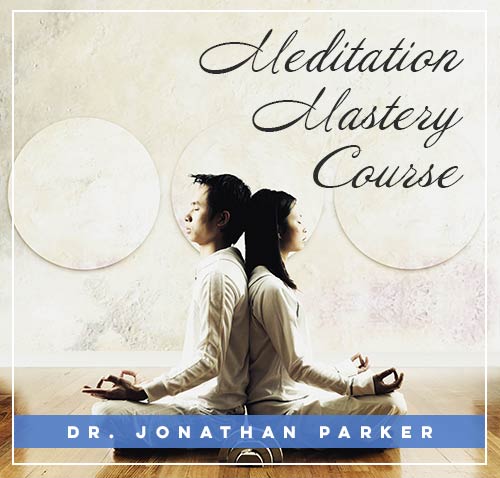Tailoring Your Meditation Practice

Before diving in, please note: This post is for informational purposes only. If you’d like to know more about how we approach topics, feel free to check out our friendly Disclaimer Page.
Hey there, amazing readers! 🖐️ Just a quick note: yes, we know there are a lot of ads here. Trust us, we get it—it’s not the prettiest look, but they help us keep this blog alive and kicking. Those pesky little ads cover the costs of all the behind-the-scenes magic, from hosting and tech stuff to creating content we hope you’ll love.
We’re committed to delivering quality posts, and your support (even just sticking around despite the ads) means everything to us. So, bear with us, and thanks for helping us keep the good vibes rolling. Now, on to the fun stuff! 😉
TRANSLATE BUTTON AT THE END OF THE ARTICLE
A Quick Overview
Meditation is a powerful tool for reducing stress, improving focus, and promoting overall well-being.
However, not all meditation practices are the same, and it’s important to tailor your practice to suit your individual needs and goals.
By understanding different types of meditation, identifying your goals, choosing the right technique, creating a comfortable space, and establishing a consistent routine, you can maximize the benefits of your meditation practice.
In this article, we will explore how to customize your meditation practice to fit your lifestyle and preferences.
Understanding Different Types of Meditation
Mindfulness Meditation: This practice involves focusing on the present moment without judgment.
It can help increase awareness and reduce stress.
Transcendental Meditation: In this technique, practitioners use a mantra to achieve a state of relaxed awareness.
Loving-Kindness Meditation: This practice involves cultivating feelings of compassion and empathy towards oneself and others.
Yoga Nidra: A form of guided meditation that promotes deep relaxation and stress relief.
Visualization Meditation: This technique involves imagining a peaceful place or scenario to promote relaxation and reduce anxiety.
Identifying Your Meditation Goals
Stress Reduction: If your goal is to reduce stress, you may benefit from mindfulness meditation or yoga nidra.
Improved Focus: Transcendental meditation or visualization meditation can help improve focus and concentration.
Emotional Well-being: Loving-kindness meditation can promote feelings of compassion and empathy towards yourself and others.
Spiritual Growth: Some people use meditation as a tool for spiritual growth, connecting with their inner selves, or a higher power.
Choosing the Right Meditation Technique
Experiment: Try different techniques to see which one resonates with you the most.
Seek Guidance: If you’re unsure where to start, consider seeking guidance from a meditation teacher or attending a class.
Consider Your Goals: Choose a technique that aligns with your goals and intentions for meditation.
Be Open-Minded: Keep an open mind and be willing to explore different techniques to find what works best for you.
Creating a Comfortable Meditation Space
Quiet Environment: Choose a quiet space where you won’t be disturbed during your practice.
Comfortable Seating: Use a cushion or chair that supports good posture and allows you to sit comfortably for an extended period.
Personal Touches: Add personal touches like candles, incense, or calming music to create a soothing atmosphere.
Minimal Distractions: Remove any distractions such as phones or electronics from your meditation space.
Establishing a Consistent Practice Routine
Set a Schedule: Establish a regular time each day for your meditation practice.
Start Small: Begin with short sessions and gradually increase the duration as you become more comfortable.
Accountability: Consider meditating with a friend or joining a group to help stay accountable to your practice.
Track Your Progress: Keep a journal to track your progress and reflect on how your practice is benefiting you.
Adjusting Your Practice for Time Constraints
Shorter Sessions: If you’re short on time, consider shorter meditation sessions, even just a few minutes can be beneficial.
Incorporate Meditation Into Daily Activities: Practice mindfulness during daily activities such as walking, eating, or commuting.
Prioritize Your Practice: Make meditation a priority in your schedule, even if it means waking up a few minutes earlier or finding time during your lunch break.
Be Flexible: Be open to adjusting your practice to fit your current schedule and commitments.
Incorporating Mindfulness into Your Meditation
Mindful Breathing: Focus on your breath as you inhale and exhale, bringing your attention to the present moment.
Body Scan: Scan your body from head to toe, noticing any tension or sensations without judgment.
Mindful Eating: Practice mindful eating by savoring each bite and paying attention to the flavors, textures, and sensations.
Daily Mindfulness: Incorporate mindfulness into your daily activities by being fully present and attentive in everything you do.
Adapting Your Practice to Your Lifestyle
Flexibility: Be willing to adapt your practice to fit your lifestyle, whether that means meditating at different times or in different locations.
Incorporate Meditation Into Your Routine: Find ways to seamlessly integrate meditation into your daily routine, such as meditating before bed or upon waking.
Practice On The Go: Use short meditation techniques throughout the day, such as deep breathing or a quick body scan, to stay centered and calm.
Stay Committed: Make a commitment to prioritize your meditation practice, even when life gets busy.
Dealing with Distractions During Meditation
Acknowledge Distractions: When distractions arise, acknowledge them without judgment and gently guide your focus back to your meditation.
Focus on Your Breath: Use your breath as an anchor to bring your attention back to the present moment.
Practice Compassion: Be compassionate towards yourself if you find it challenging to stay focused and gently redirect your attention.
Acceptance: Accept that distractions are a natural part of the meditation process and don’t get discouraged by them.
Finding Guidance and Support
Meditation Groups: Join a meditation group or class to connect with like-minded individuals and receive guidance from experienced practitioners.
Online Resources: Explore online meditation resources, such as guided meditations, podcasts, or forums for support and inspiration.
Meditation Apps: Consider using meditation apps that offer guided meditations, timers, and tracking features to support your practice.
Mentorship: Seek out a meditation mentor or teacher who can provide personalized guidance and support as you deepen your practice.
Evaluating and Adjusting Your Progress
Self-Reflection: Take time to reflect on your meditation practice, noting any changes in your mood, stress levels, or overall well-being.
Adjust as Needed: If you’re not seeing the desired results, consider adjusting your practice by trying a new technique or increasing the duration of your sessions.
Celebrate Milestones: Celebrate your progress and milestones along the way, no matter how small.
Seek Feedback: Consider asking for feedback from a meditation teacher or mentor to gain insight into how you can improve your practice.
Exploring Advanced Meditation Techniques
Mantra Meditation: Use a specific mantra or phrase to focus your mind and deepen your meditation practice.
Breathwork: Explore different breathing techniques, such as pranayama, to enhance your meditation experience.
Chakra Meditation: Focus on the energy centers in your body, known as chakras, to promote balance and alignment.
Silent Retreats: Consider attending a silent meditation retreat to deepen your practice and experience extended periods of mindfulness.
Conclusion
Customizing your meditation practice is essential for maximizing its benefits and ensuring that it aligns with your goals and lifestyle.
By understanding different types of meditation, identifying your goals, choosing the right technique, creating a comfortable space, establishing a consistent routine, and adjusting your practice as needed, you can tailor your meditation practice to suit your individual needs.
Remember to stay open-minded, seek guidance and support when needed, and regularly evaluate your progress to ensure that your meditation practice continues to evolve and grow.
With dedication and commitment, you can create a meditation practice that enhances your well-being and promotes a sense of peace and clarity in your life.

The Enlightenment Journey is a remarkable collection of writings authored by a distinguished group of experts in the fields of spirituality, new age, and esoteric knowledge.
This anthology features a diverse assembly of well-experienced authors who bring their profound insights and credible perspectives to the forefront.
Each contributor possesses a wealth of knowledge and wisdom, making them authorities in their respective domains.
Together, they offer readers a transformative journey into the realms of spiritual growth, self-discovery, and esoteric enlightenment.
The Enlightenment Journey is a testament to the collective expertise of these luminaries, providing readers with a rich tapestry of ideas and information to illuminate their spiritual path.
Our Diverse Expertise 🌟
While our primary focus is on spirituality and esotericism, we are equally passionate about exploring a wide range of other topics and niches 🌍📚. Our experienced team is dedicated to delivering high-quality, informative content across various subjects ✨.
To ensure we provide the most accurate and valuable insights, we collaborate with trusted experts in their respective domains 🧑🏫👩🏫. This allows us to offer well-rounded perspectives and knowledge to our readers.
Our blog originally focused on spirituality and metaphysics, but we’ve since expanded to cover a wide range of niches. Don’t worry—we continue to publish a lot of articles on spirituality! Frequently visit our blog to explore our diverse content and stay tuned for more insightful reads.






